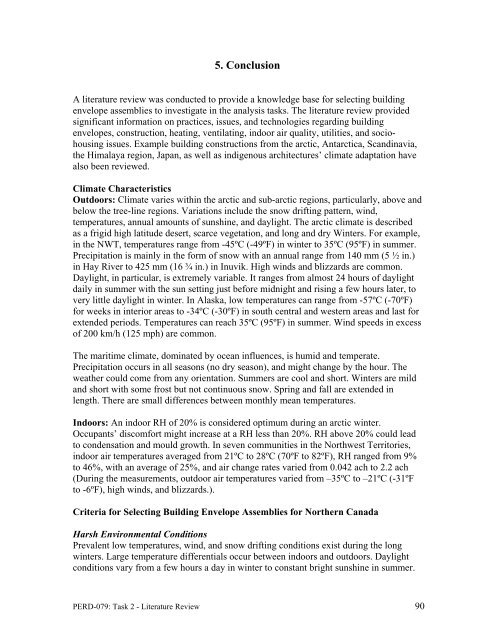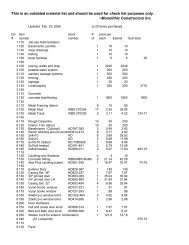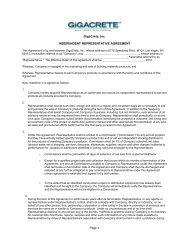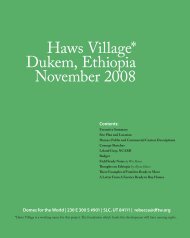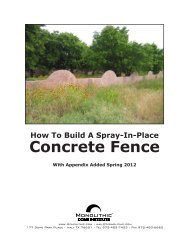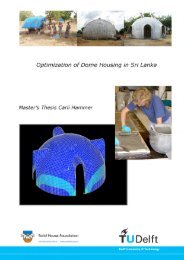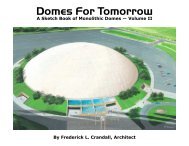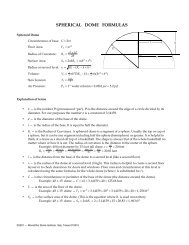Literature Review on Building Envelope, Heating and ... - Beeshive.org
Literature Review on Building Envelope, Heating and ... - Beeshive.org
Literature Review on Building Envelope, Heating and ... - Beeshive.org
You also want an ePaper? Increase the reach of your titles
YUMPU automatically turns print PDFs into web optimized ePapers that Google loves.
5. C<strong>on</strong>clusi<strong>on</strong><br />
A literature review was c<strong>on</strong>ducted to provide a knowledge base for selecting building<br />
envelope assemblies to investigate in the analysis tasks. The literature review provided<br />
significant informati<strong>on</strong> <strong>on</strong> practices, issues, <strong>and</strong> technologies regarding building<br />
envelopes, c<strong>on</strong>structi<strong>on</strong>, heating, ventilating, indoor air quality, utilities, <strong>and</strong> sociohousing<br />
issues. Example building c<strong>on</strong>structi<strong>on</strong>s from the arctic, Antarctica, Sc<strong>and</strong>inavia,<br />
the Himalaya regi<strong>on</strong>, Japan, as well as indigenous architectures’ climate adaptati<strong>on</strong> have<br />
also been reviewed.<br />
Climate Characteristics<br />
Outdoors: Climate varies within the arctic <strong>and</strong> sub-arctic regi<strong>on</strong>s, particularly, above <strong>and</strong><br />
below the tree-line regi<strong>on</strong>s. Variati<strong>on</strong>s include the snow drifting pattern, wind,<br />
temperatures, annual amounts of sunshine, <strong>and</strong> daylight. The arctic climate is described<br />
as a frigid high latitude desert, scarce vegetati<strong>on</strong>, <strong>and</strong> l<strong>on</strong>g <strong>and</strong> dry Winters. For example,<br />
in the NWT, temperatures range from -45ºC (-49ºF) in winter to 35ºC (95ºF) in summer.<br />
Precipitati<strong>on</strong> is mainly in the form of snow with an annual range from 140 mm (5 ½ in.)<br />
in Hay River to 425 mm (16 ¾ in.) in Inuvik. High winds <strong>and</strong> blizzards are comm<strong>on</strong>.<br />
Daylight, in particular, is extremely variable. It ranges from almost 24 hours of daylight<br />
daily in summer with the sun setting just before midnight <strong>and</strong> rising a few hours later, to<br />
very little daylight in winter. In Alaska, low temperatures can range from -57ºC (-70ºF)<br />
for weeks in interior areas to -34ºC (-30ºF) in south central <strong>and</strong> western areas <strong>and</strong> last for<br />
extended periods. Temperatures can reach 35ºC (95ºF) in summer. Wind speeds in excess<br />
of 200 km/h (125 mph) are comm<strong>on</strong>.<br />
The maritime climate, dominated by ocean influences, is humid <strong>and</strong> temperate.<br />
Precipitati<strong>on</strong> occurs in all seas<strong>on</strong>s (no dry seas<strong>on</strong>), <strong>and</strong> might change by the hour. The<br />
weather could come from any orientati<strong>on</strong>. Summers are cool <strong>and</strong> short. Winters are mild<br />
<strong>and</strong> short with some frost but not c<strong>on</strong>tinuous snow. Spring <strong>and</strong> fall are extended in<br />
length. There are small differences between m<strong>on</strong>thly mean temperatures.<br />
Indoors: An indoor RH of 20% is c<strong>on</strong>sidered optimum during an arctic winter.<br />
Occupants’ discomfort might increase at a RH less than 20%. RH above 20% could lead<br />
to c<strong>on</strong>densati<strong>on</strong> <strong>and</strong> mould growth. In seven communities in the Northwest Territories,<br />
indoor air temperatures averaged from 21ºC to 28ºC (70ºF to 82ºF), RH ranged from 9%<br />
to 46%, with an average of 25%, <strong>and</strong> air change rates varied from 0.042 ach to 2.2 ach<br />
(During the measurements, outdoor air temperatures varied from –35ºC to –21ºC (-31ºF<br />
to -6ºF), high winds, <strong>and</strong> blizzards.).<br />
Criteria for Selecting <strong>Building</strong> <strong>Envelope</strong> Assemblies for Northern Canada<br />
Harsh Envir<strong>on</strong>mental C<strong>on</strong>diti<strong>on</strong>s<br />
Prevalent low temperatures, wind, <strong>and</strong> snow drifting c<strong>on</strong>diti<strong>on</strong>s exist during the l<strong>on</strong>g<br />
winters. Large temperature differentials occur between indoors <strong>and</strong> outdoors. Daylight<br />
c<strong>on</strong>diti<strong>on</strong>s vary from a few hours a day in winter to c<strong>on</strong>stant bright sunshine in summer.<br />
PERD-079: Task 2 - <str<strong>on</strong>g>Literature</str<strong>on</strong>g> <str<strong>on</strong>g>Review</str<strong>on</strong>g> 90


